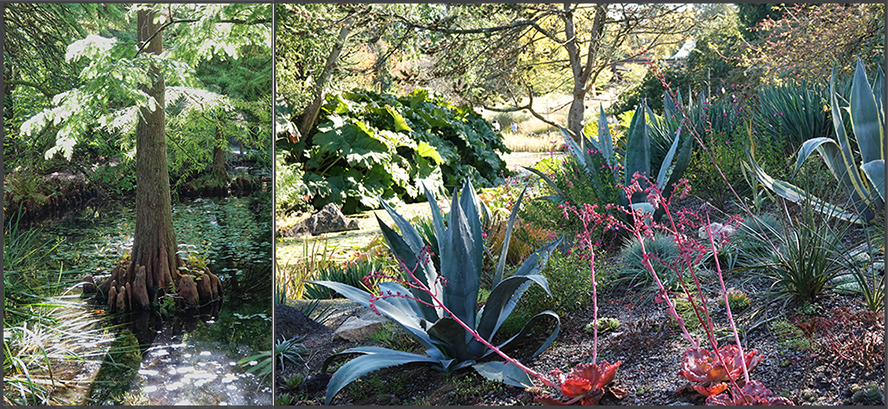
We stayed in Vancouver three nights, our motel was in North Vancouver for the prices in Vancouver are horrific.
Our first item on my program was the Polygon Gallery ('Without a Word'), which had an excellent exhibition (photos
included those of W. Eugene Smith, Berenice Abbott, Robert Doisneau, Walker Evans, Phillip Jones Griffith, Marc
Ribaud and many others), but their bookshop was closed
due lack of staff. Pity.

Next we explored
the area: the Shipyards and Burrard Dry Dock Pier.

The weather was sunny, day 15 and our 3rd day of sun (but still fairly cold, temperature around 6 Celsius).

On the pier
preparations were in progress for filming, shooting for 'DC's Legends of Tomorrow'.
I also recommend a visit to nearby Booklovers Used Books in Lower Lonsdale; (free) carpark around the back.


Even for non-aviation enthusiasts this is a nice place to watch seaplanes arrive and depart.
Park at Burrard Landing, at the Vancouver Convention Centre West.

The Pannekoeken House is one of the restaurants at this seaplane base. Enjoy lunch and watch the planes!
STANLEY PARK

Stanley Park has an excellent collection of Totem Poles. On previous visits to Vancouver I did not find
the time to explore this park and this time we only walked the part along the Seawall Path to the Totem Poles and circled
back to Vancouver Aquarium. Next time I think we'll look for bicycles to rent and explore a larger part of Stanley Park.
en.wikipedia.org:_Stanley_Park
en.wikipedia.org:_List_of_attractions_and_monuments_in_Stanley_Park

Totem poles at Brockton Point. This is the most visited tourist attraction in British Columbia!
Many of the original poles were moved to museums in order to preserve them. Several replicas were commissioned
or loaned to the park board between 1986 and 1992.

There are various Totem Pole variations: tall, short, frontal, greet figure, house board and mortuary.

The First Peoples of the Pacific Coast recorded their history and preserved their legends and stories on spectacularly carved totem poles. There was no religious aspect here, but missionaries misunderstood and convinced the First Peoples that they had to get rid off those totem poles or otherwise could not join Christianity.
Those missionaries got a lot to answer for!
Ethnographers commonly accept totemism as a type of social organization that defines lines of kinship for posterity.
Under totemic rules, there are definitions about whom one may or may not marry, based on who has or who has not the right to claim association with certain totem figures.
A totem animal or supernatural figure is variously regarded as the bloodline parent of the group. |

Mortuary Poles (far right) can be recognised by the large panel on top, which is said to have fronted a
three-dimensional box, said to have contained the bleached remains of a high-ranking
person.

The Totem Poles also served as a housepost indoors to support the huge roof beams.

During 1870 and 1940 there were several isolated preservation efforts. Between 1945 - 1965 a revival
of 'the old ways' became evident and artists such as Charley James (1867-1938) and Ellen Neel (1916-1966)
found recognition for their work as artists as well as the cultural importance of their work.
Totem Poles appear painted, natural or with feathering technique (had to distinguish from a distance).
One can discern figures for story telling purposes (e.g. a heroic event) or for heraldic purposes (e.g. a crest).
Totem figures include: Bear-Mother (story), Bear, Beaver, Birds, Thunderbird, Raven, Frog, Dzunkwa ('Cannibal Woman' a.k.a. Dzunuḵ̓wa, Tsonoqua, Tsonokwa, Basket Ogress; a figure in Kwakwaka'wakw mythology and Nuu-chah-nulth mythology), Mountain Goat,
Human, Salmon, Whales, Sun and Moon and Wolf.
There are distinct tribal styles, e.g.: Haida, Coast Salish, Nuxälk, Kwakiut and Tsimshian.
In 1909 anthropologist John Reed Swanton identified and catalogued 62 Haida heraldic crests.
In 1916 Franz Boas, a collector and ethnogrpaher, reported on 99 different Tsimshian heraldic crests.
Plenty variety!
I found the concise booklet 'Totem Poles' by Pat Kramer very informative and useful for some basic understanding. |

A magnificent collection, worthy tribute to coastal cultures
 Photos © Ruud Leeuw
Photos © Ruud Leeuw















